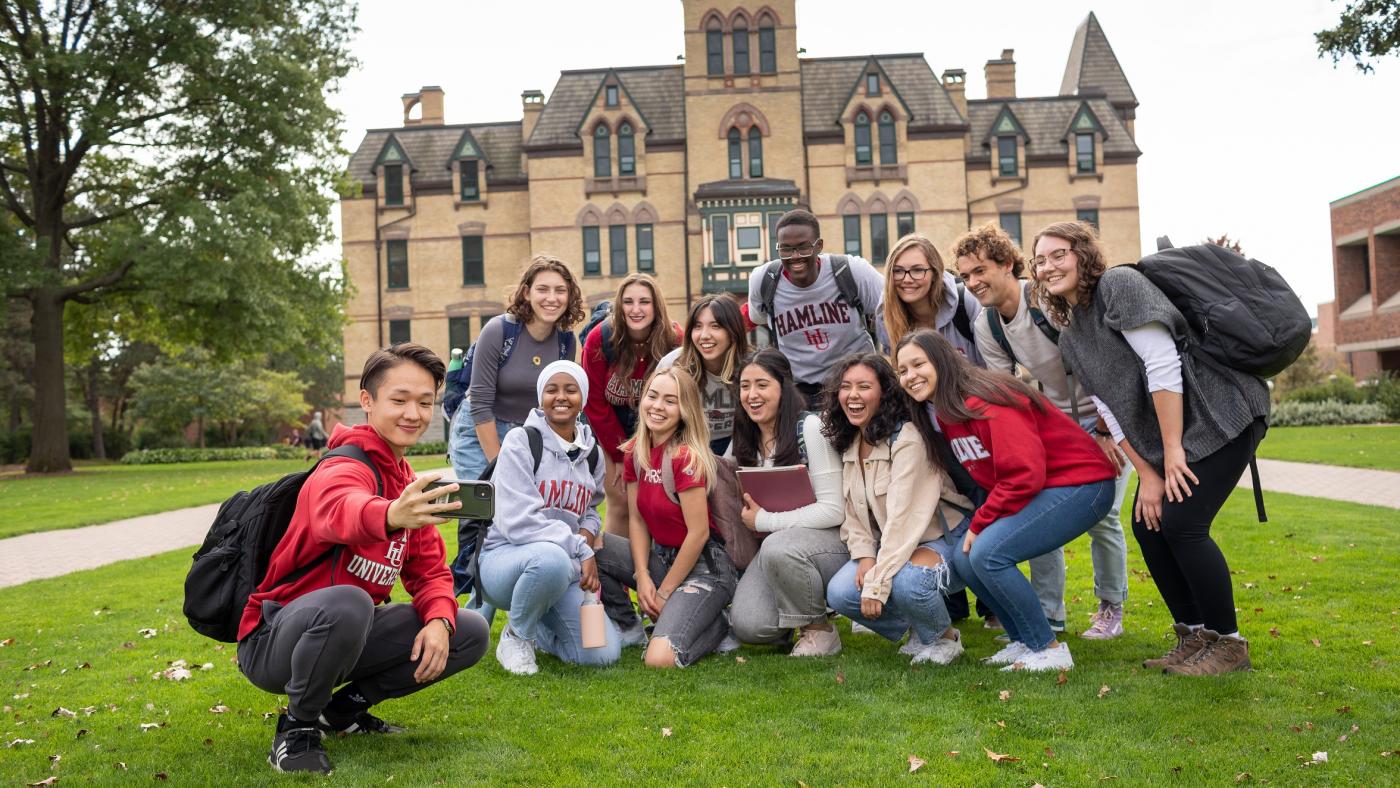Fall enrollment at Hamline University this year increased across the board over the Fall 2023 semester. Hamline attributes much of this success to its staff’s exceptional retention efforts, which saw an outstanding 78.2% retention rate among first-year students, compared to 73.6% the previous year.
“Moving that needle by a single percentage point is remarkable,” Acting/Interim President Kathleen Murray said of the retention rate, “so this result is a fabulous reflection of a great deal of hard work. It is our best first-to-second year retention since 2016.”
Undergraduate enrollment increased by 3.6% this fall semester, topping off at 1,734 students, with a 22% increase in first-year students over last year – Hamline’s largest class since 2019.
Graduate enrollment increased by a noteworthy 4.9%, with 759 enrolled. Hamline’s Online Degree Completion program saw a significant enrollment increase of 46.5%, marking four consecutive years of growth for that program.
Lisa Nordeen, Assistant Provost for Student Success and Faculty Development, attributes the Center for Academic Success and Achievement’s success in retaining first-year students to a multi-year focus on building substantive relationships between advisors and students while increasing advisor visibility in first-year seminars.
“There is a CASA advisor assigned to every single first-year seminar cohort, which means they can see exactly who will be providing outreach – it’s about putting a face to that name,” Nordeen said “Advisors are also focusing on holistically supporting students – it isn’t just about getting students registered, it’s about exploring plans for next semester and identifying what the students want to achieve and how getting registered will move them closer to that goal.”
Last year 90% of all first-year students had one-on-one appointments with CASA advisors, who had a total of over 4,000 appointments with undergraduate students in the 2023-24 academic year.
Another crucial factor in Hamline’s retention rate is the Piper Academic Community grant program, funded by the Minnesota Office of Higher Education, which served 20% of first-year students last year. PAC grants were developed to support low-income students, first-generation college students and BIPOC students as they transition to college. Students are given opportunities to build community and a sense of belonging through various workshops, group advising, and connecting with academic support.
“Students who participated in the PAC grant program for both semesters last year retained at a 100% rate,” Nordeen said. “The students who participated in one semester retained at 97.5%.”
The PAC grant program generated benefits beyond its recipients, too. This semester, half of Hamline’s residential advisors are former PAC recipients and over half of the first-year student mentors participated in the PAC grant program.
“I think it has developed a culture of engaging in the broader Hamline community and a desire to improve the experience of incoming students and peers on campus,” Nordeen said.
